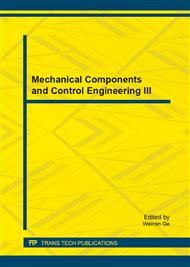p.687
p.691
p.695
p.699
p.703
p.707
p.715
p.720
p.724
Power Transmission Rule Described by Block Diagram
Abstract:
Analytically describing the relationship among steady-state power flow numerical values is a significant proposition. Because the block diagram has the ability to describe the signal transmission analytically, we choose this method to study the steady-state grid’s power transmission rule. Each node or branch is chosen as a basic power transmission unit, and the ratio between the unit’s output power and input power is defined as power transmission gain. The power transmission relationship of each unit can be established according to the circuit analysis, and then the block diagram of each unit can be built on the basis of above relationship. Finally, a block of the whole power grid can be drawn according to the basic units’ connection relationships. The transmission relationship of the whole power grid was analytically expressed by the block diagram simplification method.
Info:
Periodical:
Pages:
703-706
Citation:
Online since:
October 2014
Authors:
Price:
Сopyright:
© 2014 Trans Tech Publications Ltd. All Rights Reserved
Share:
Citation:


